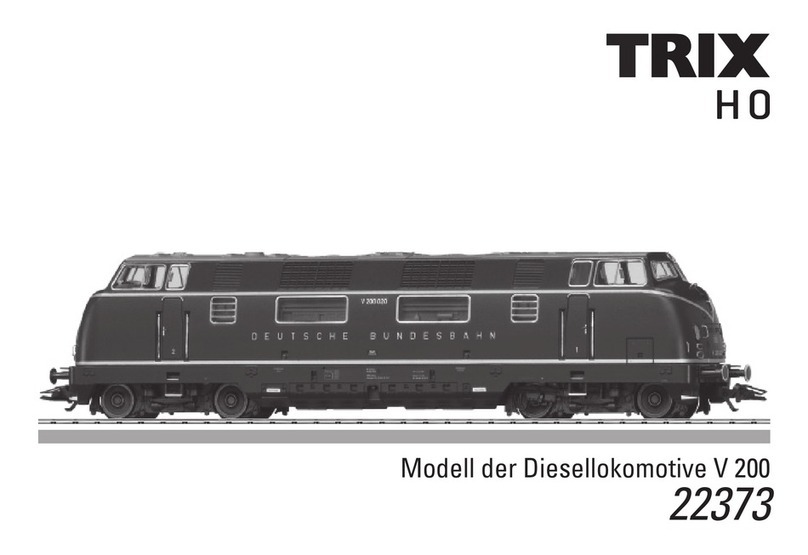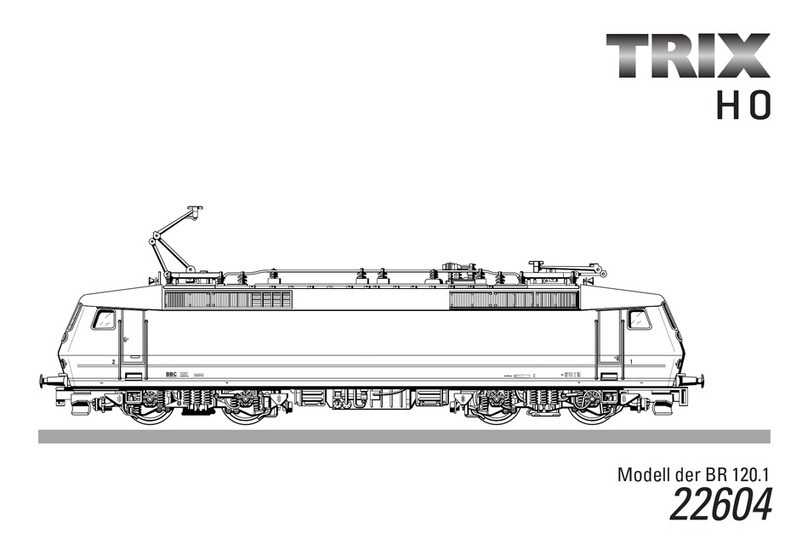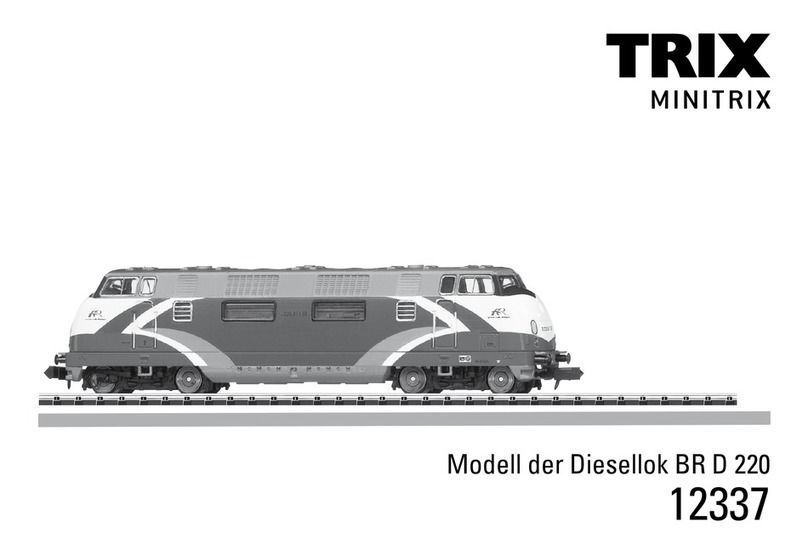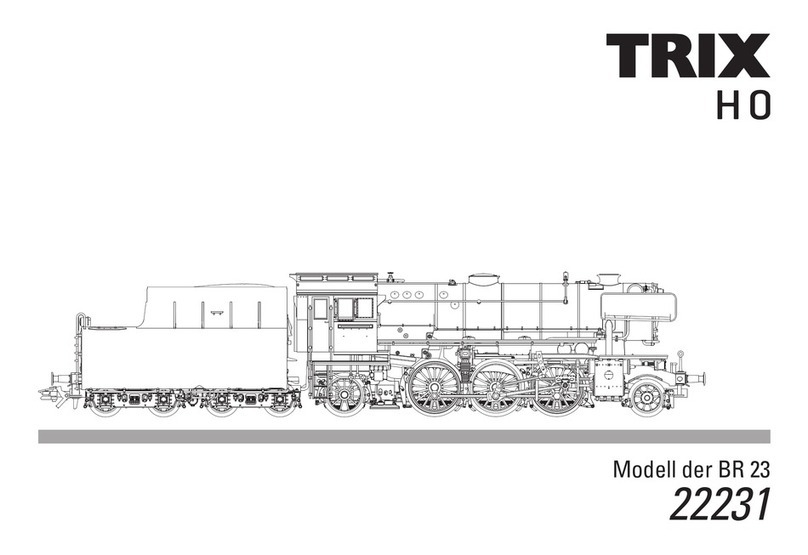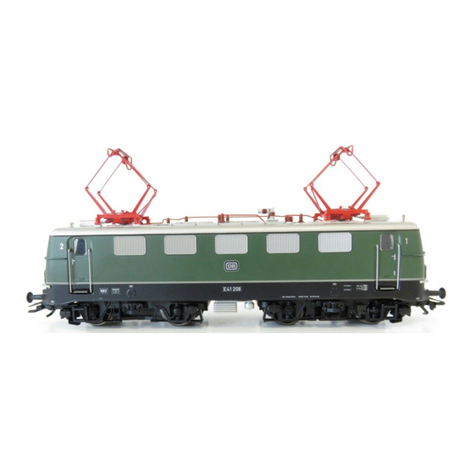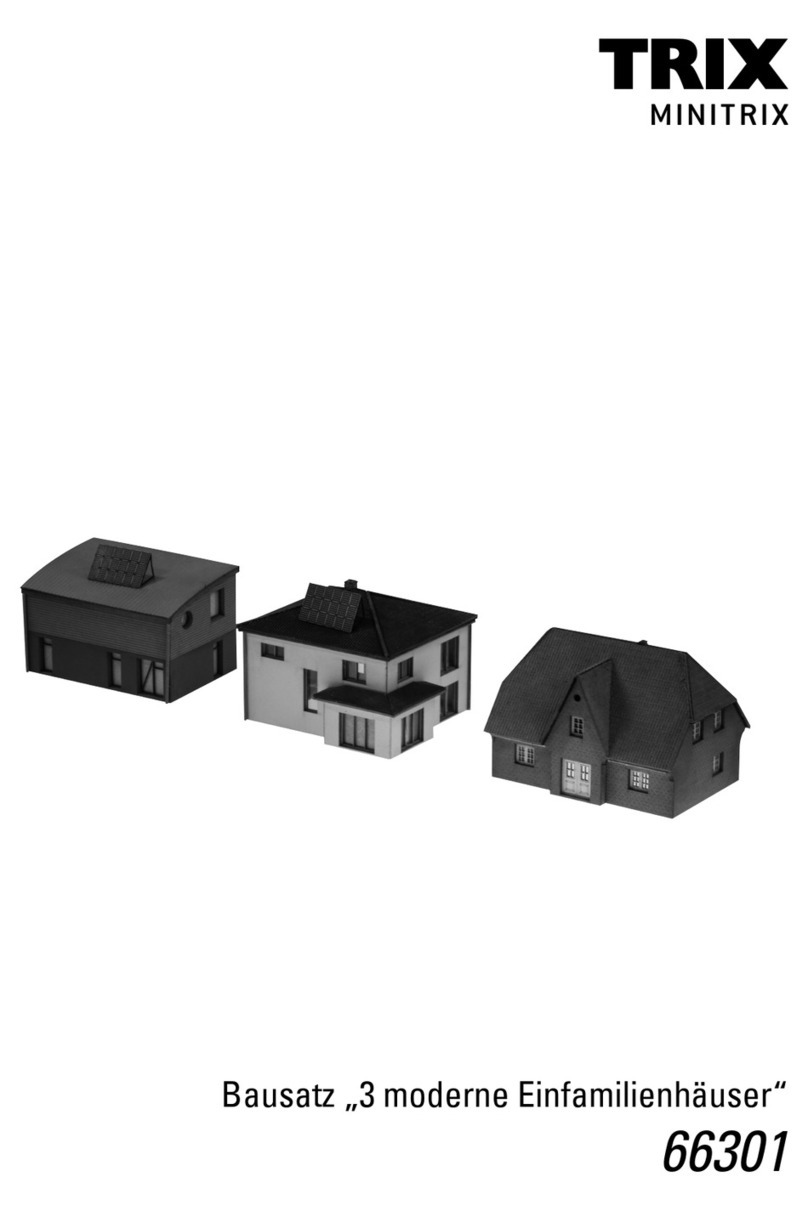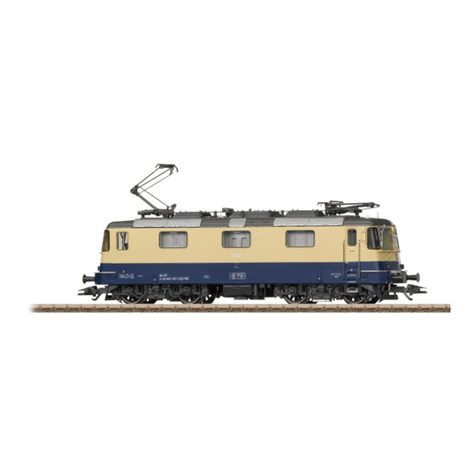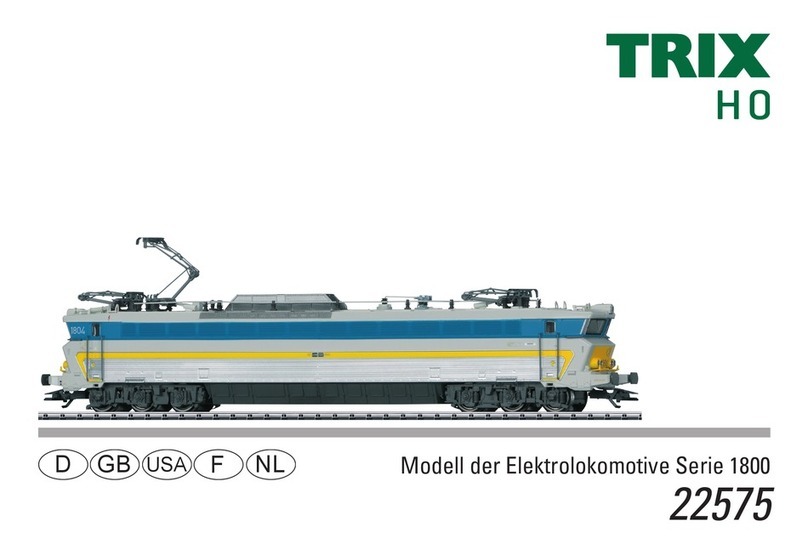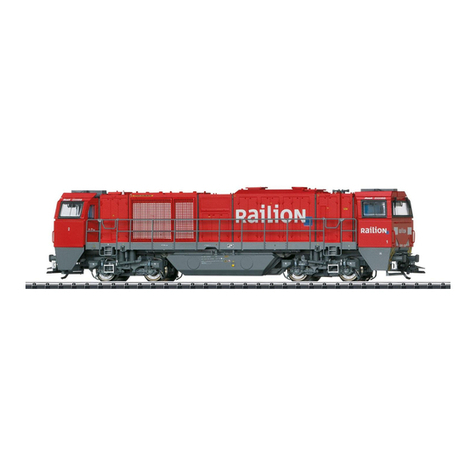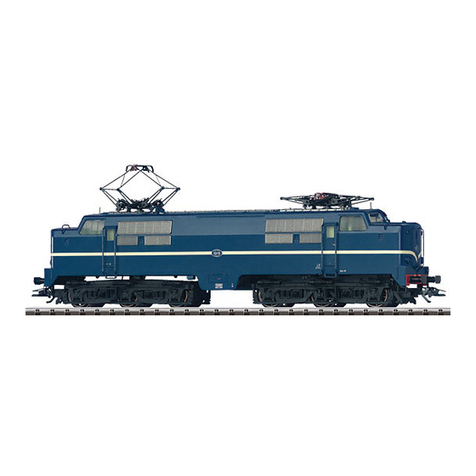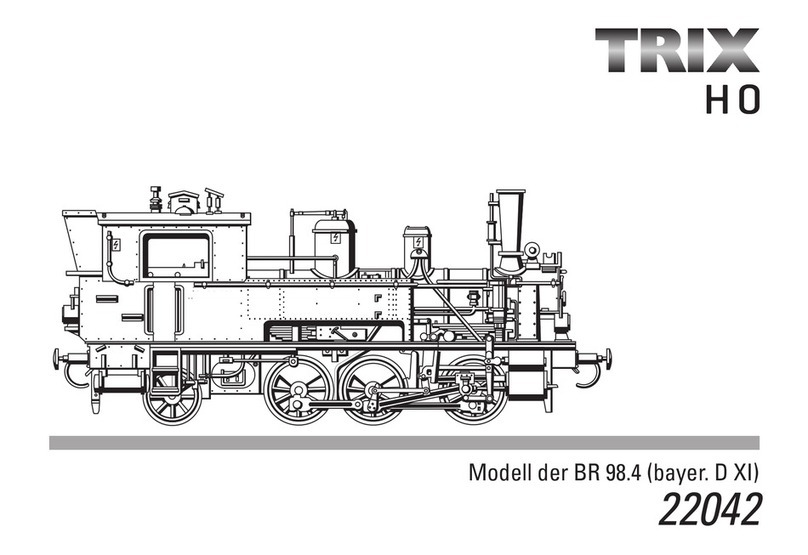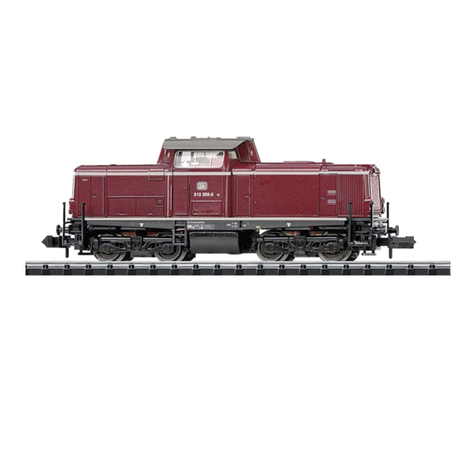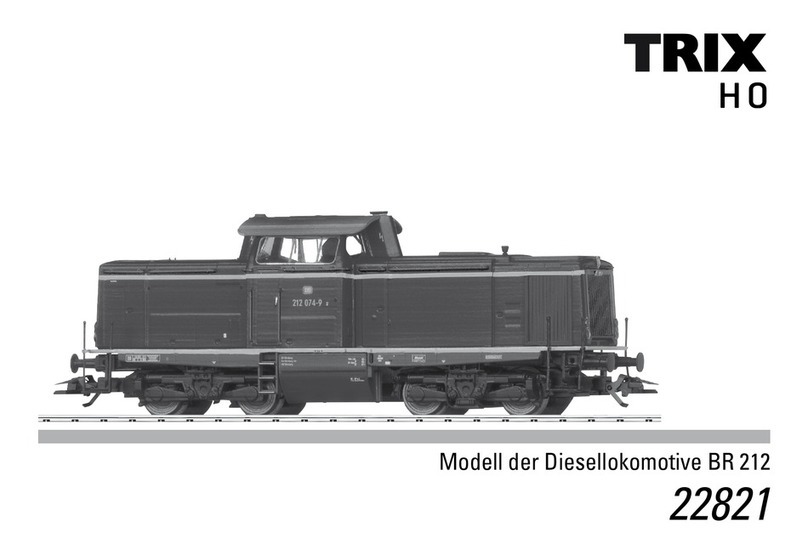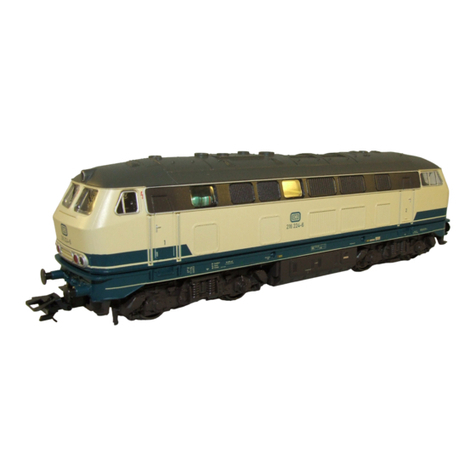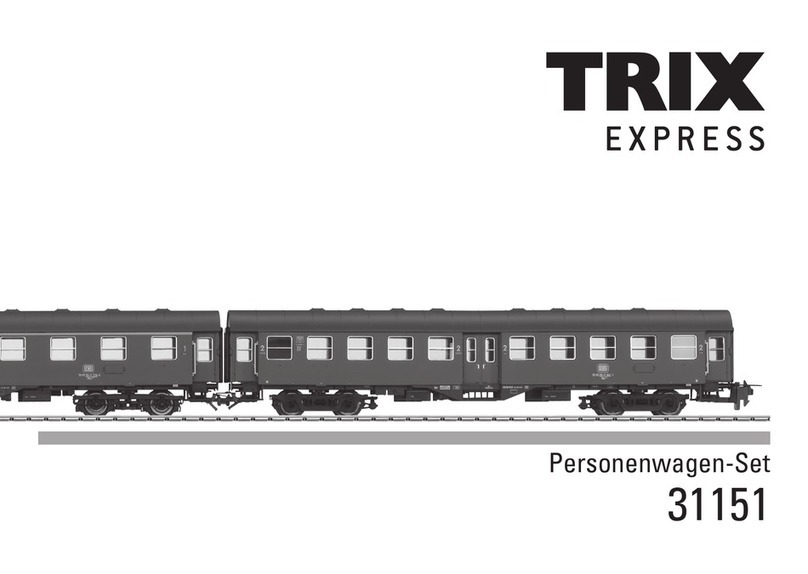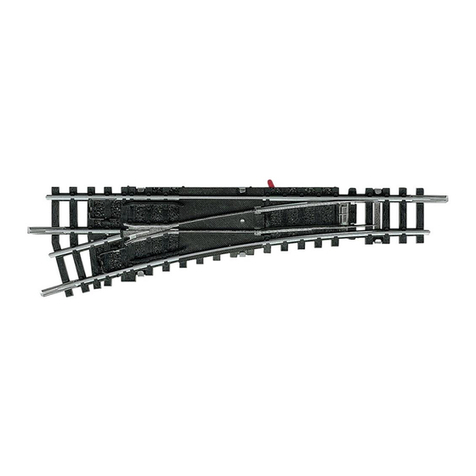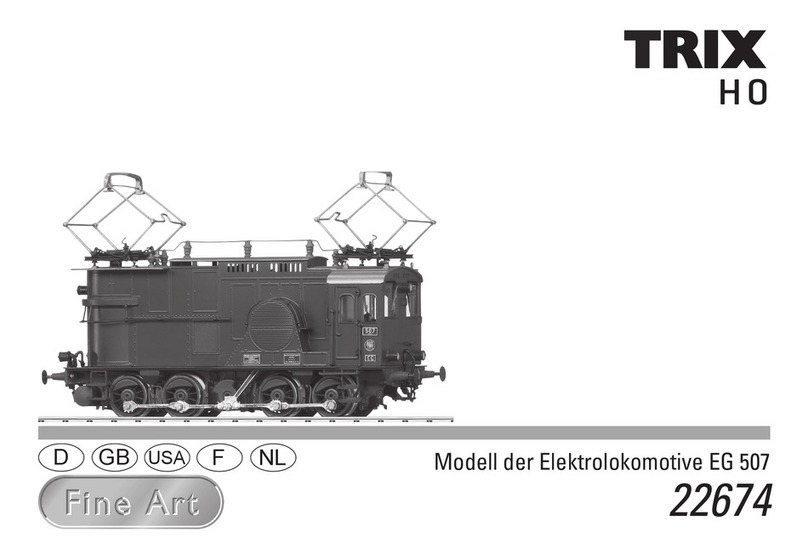
5
Informations concernant la locomotive réelle
Au début des années 30, les charges de plus en plus lourdes
et l’accélération du trafic ferroviaire nécessitèrent la
conception d’une machine lourde pour la traction de trains
marchandises. En 1937 Henschel livra pour la série 45
les deux premiers prototypes qui atteignirent la vitesse
maximale exigée de 90 km/h grâce à des roues couplées de
1600 mm de diamètre (1400 mm pour la BR 44). La disposition
d’essieux était 151 ; en outre, la pression de la chaudière
pouvait être poussée à 20 bars et la puissance être ainsi
augmentée jusqu’à 3020 PSi. La livraison de la série (45 003
– 45 026) fut toutefois retardée jusqu’en 1940/41.
Les machines firent leurs preuves dans le service marchan-
dises lourd et rapide et se distinguèrent par une marche
particulièrement équilibrée.
Après la seconde guerre mondiale, les locomotives firent
d‘abord l‘objet de révisions générales et bon nombre d‘entre
elles furent dotées d‘une nouvelle chaudière avec alimenta-
tion mécanique. La locomotive 45 004 – le présent modèle -,
à la disposition du «Versuchsamt» (Office de Recherches et
d’Essais) Göttingen depuis 1948 en tant que locomotive-frein
fut épargnée. Au milieu des années 50, elle fut confiée au
bureau d`experimental Minden. Elle y fut réparée encore
une fois suite à un dommage sur le cylindre central et
réformée peu de temps après.
Informatie van het voorbeeld
Het stijgende treingewicht en het aantrekken van het
treinverkeer in het begin van de dertiger jaren, vereisten het
ontwikkelen van een zware goederentreinlocomotief. De
eerste beide prototypes leverde Henschel in 1937 als BR 45
af, welke de vereiste maximumsnelheid van 90 km/h door de
1600 mm hoge gekoppelde drijfwielen (bij de BR 44 1400 mm)
bereikten. De asindeling was 1‘E1‘ en daarnaast kon de
keteldruk tot 20 bar opgevoerd worden en daarmee het ver-
mogen tot 3020 pk. De levering van de serie (45 003 - 45 026)
werd vertraagd tot 1940/41.
Ze bewezen zich in de snelle en zware goederendienst en
liepen uiterst rustig.
Na de tweede wereldoorlog werd aan de locomotieven
eerst groot onderhoud uitgevoerd. Veel locs kregen een
nieuwe ketel met een mechanische vuurverdeling. De loc
45 004 - het voor u liggende model - bleef daarvan ver-
schoont. Sinds 1948 deed deze loc bij het testcentrum in
Göttingen dienst als rem-loc. In het midden van de vijftiger
jaren kwam deze naar het testcentrum in Minden. Daar
werd de loc na een beschadiging aan de middelste cilinder
nog één keer gerepareerd en kort daarna buitendienstge-
steld.

